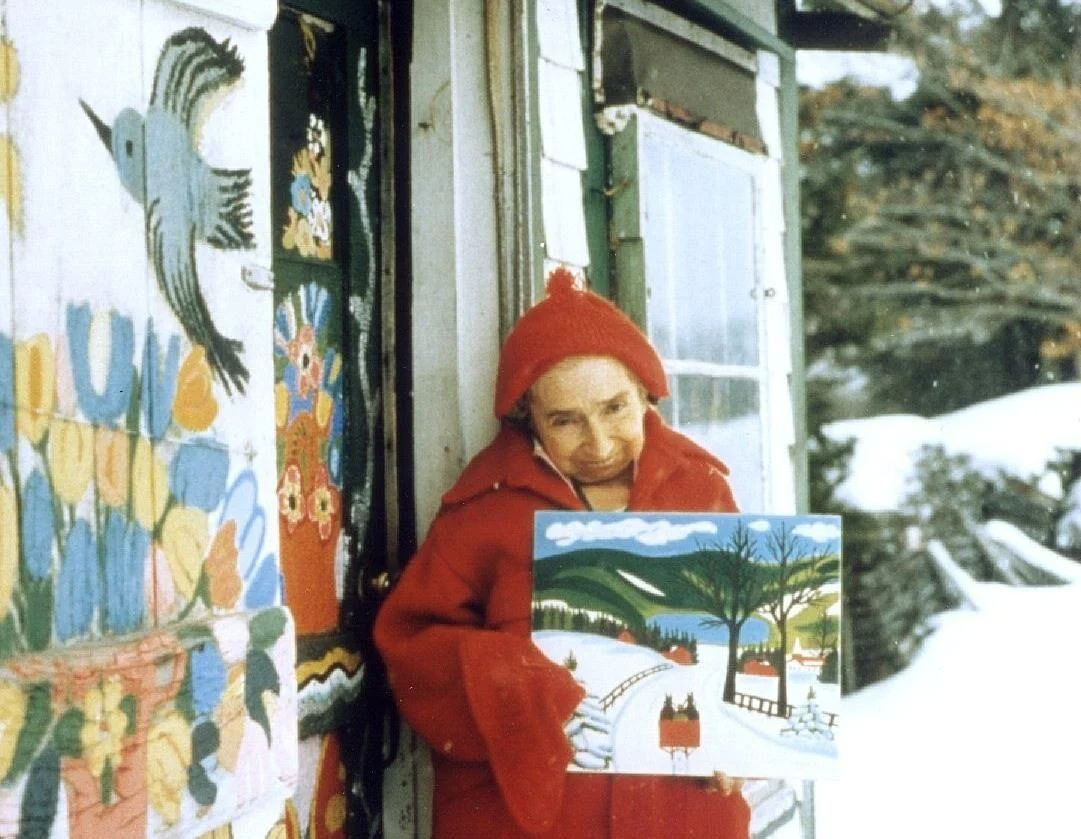
If you are looking to make a change in your home, sign-ups just opened for my free live workshop! We only host this popular offering once a year, so make sure you check our session schedule and save your seat ASAP.
This post is part of our Muses series, in which we highlight people whose work has helped to build a more joyful world. Our Muses work with color, flowers, and curves, but make no mistake — they are as disruptive to the hierarchies that suppress joy as the bravest revolutionary. They are outsiders and iconoclasts, overlooked by the establishment and judged for failing to follow the “rules” of their field. Their stories show us how to be free in a world that often isn’t, and how joyous creativity can be can be a potent force for resilience, connection, and change.

It was the house that first caught my eye. A tiny thing covered in white shingles, not much bigger than a chicken coop, the door and window embellished with birds and bunches of flowers. And next to the door, a sign hanging slightly askew: “Paintings for sale”
I clicked through and was greeted by an explosion of color: folk-style paintings on every surface. A pair of whimsical Scottie dogs over the cupboard, butterflies ascending the kitchen walls, and most of all flowers. Flowers trailing up the stair rail, flowers on the furniture, flowers even on the hood over the stove.

It was a meager dwelling, but quite literally full of life. And the story of how it got that way is both tragic and inspiring — a lesson in the power of joy to sustain us even through great adversity.
Painting Joy: Maud Lewis and the Art of Resilience
Canadian folk artist Maud Lewis was born in 1903 in South Ohio, Nova Scotia. She was born with an unknown condition that left her small in stature and physically deformed. Her shoulders sloped, her chin rested on her chest, and she walked with a crooked gait. Over time, her condition developed into rheumatoid arthritis, stiffening her hands and making daily tasks difficult. She struggled with loneliness and quit school at 14, possibly to avoid the mocking of her peers.
Her mother Agnes introduced her to painting, and she began making Christmas cards to sell. She never had any formal art schooling, but developed a unique style inspired by the things she saw in her daily life: cats and flowers, birds and horses.
When she was in her early 30s, she lost both parents within two years of each other. Unable to support herself, she went to go live with an aunt. That same year she married Everett Lewis, a fish peddler. The story goes that she had answered an ad he had placed for a housekeeper, though she was unable to do much housework so Everett would be the one to do it. They would live together in his one-room cottage until her death.
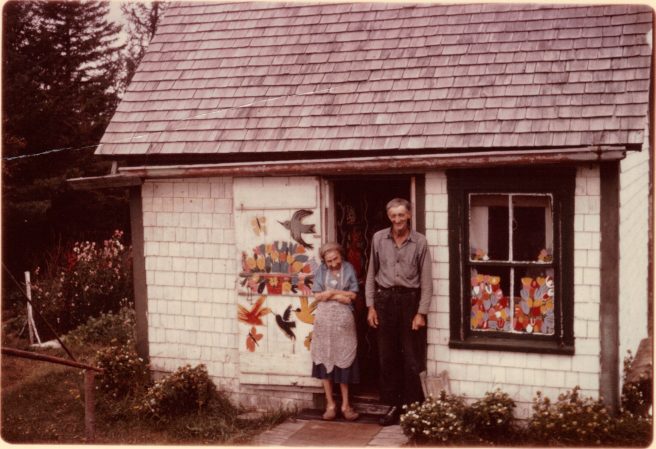
an artful life
Maud continued to sell artworks and cards for 5 cents each, often accompanying Everett on his visits to customers. Meanwhile, she began to decorate their one-room cottage with her paintings, covering the wallpaper with tendrils and blossoms, even covering the windowpanes with bunches of tulips.


By all accounts, the Lewises lived in deep poverty. The cottage was barely 10 x 12 feet and had no indoor plumbing or electricity. Everett was reported to be miserly, taking the batteries out of the radio so Maud wouldn’t run them down by listening to it. Still, he supported her painting and often scrounged for half-used cans of paint she could use in her artwork. He also encouraged her to use other surfaces for her art, such as masonite and pulpboard.
As her condition progressed, she increasingly became housebound. But she continued to paint and sell her artworks until she died at age 67. She became more well-known later in life and began to receive commissions, including one from the Nixon White House. Yet she never sold a painting for more than $10 in her lifetime.
Lewis died of pneumonia, which may have been exacerbated by malnutrition. Her body was so small that she was buried in a child’s coffin.
painting a more joyful world
Despite her meager circumstances and physical constraints, Lewis’s work depicts a world that is unfailingly sunny. Fluffy, big-eyed cats in fields of tulips. A black truck in front of a yellow house with a red roof. (This painting was supposedly traded for a grilled cheese sandwich.) Sweet landscapes of sailboats with fluffy clouds in a blue sky. This mirrors her disposition, which was said to be joyful, optimistic, and charming. She was happiest with a paintbrush in her hand.
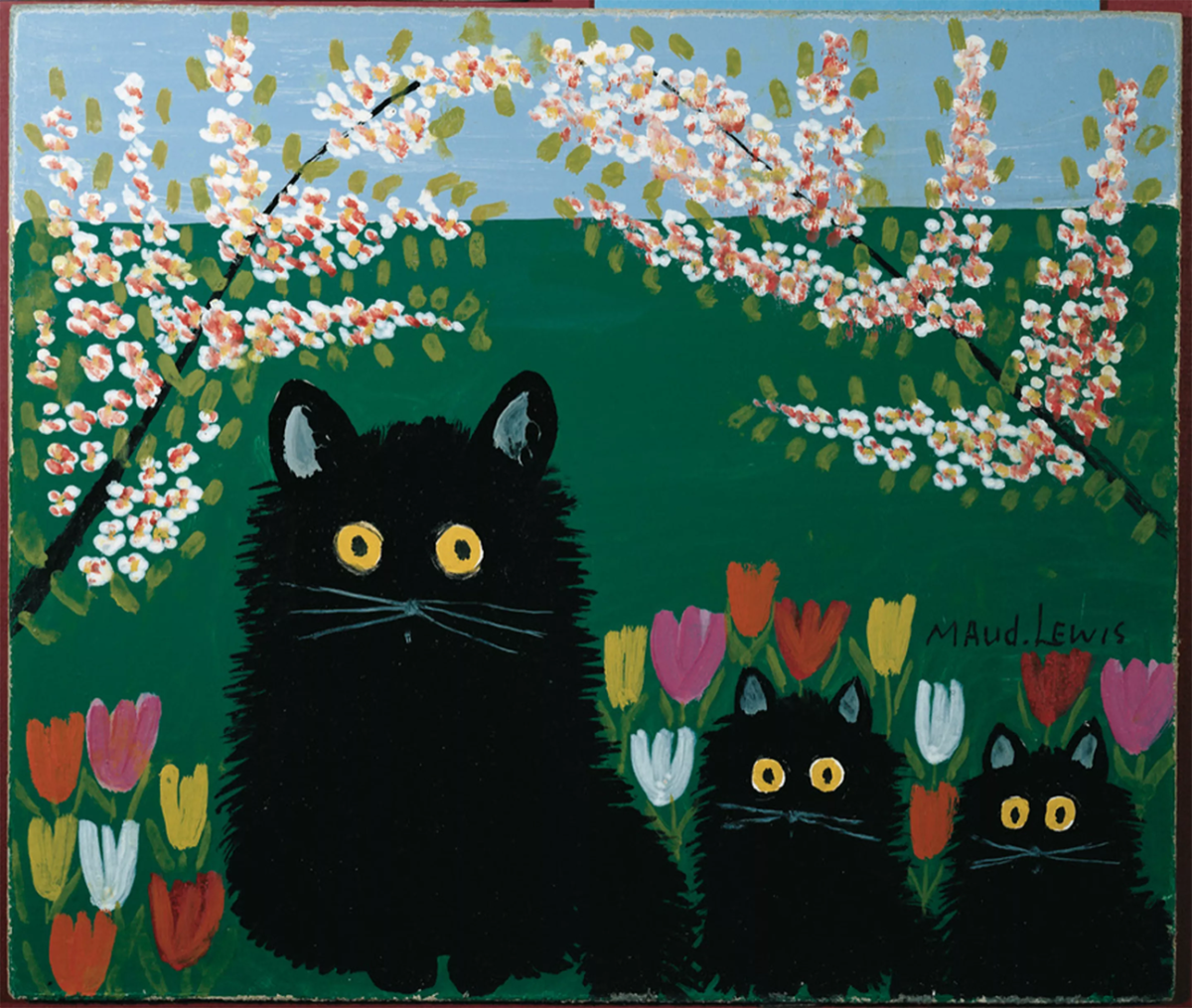
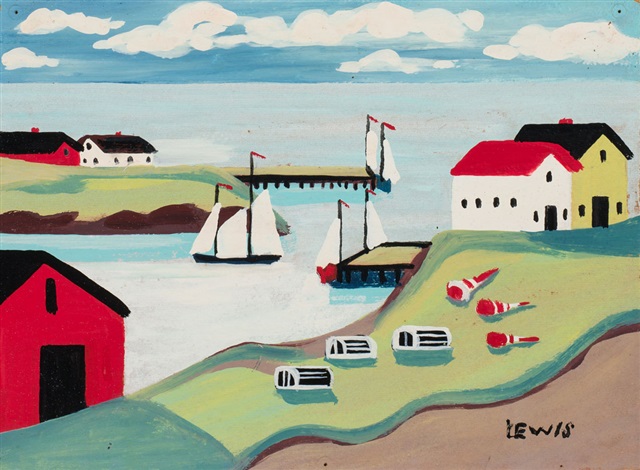
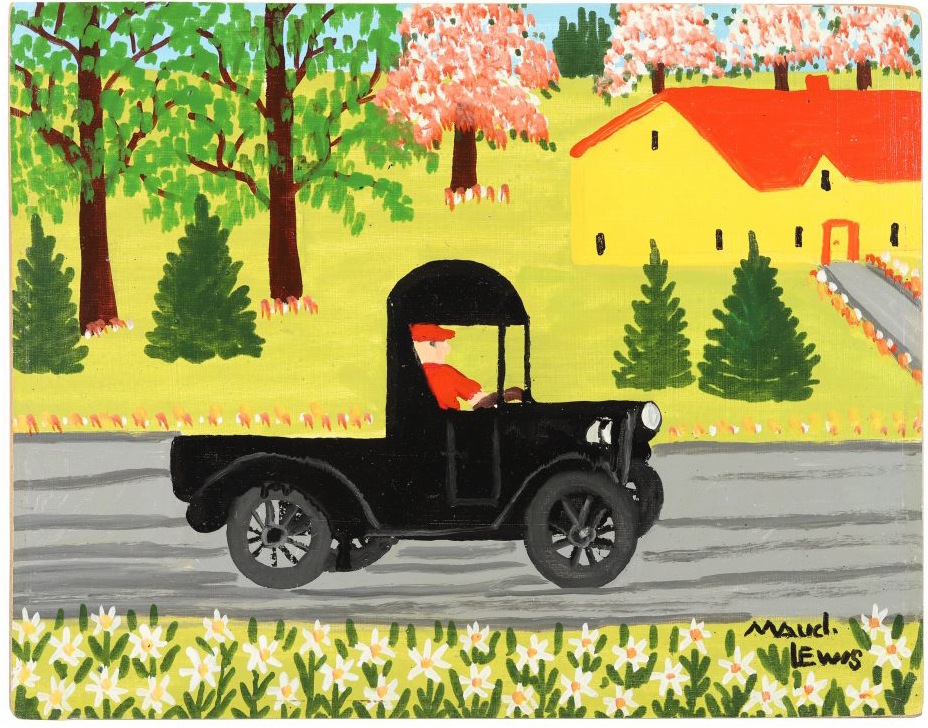
For Lewis, art was the ultimate tool of resilience. Painting gave her joy amid a life defined by adversity, and once she seized that joy, she never let go. Given a tiny one-room cottage and a paintbrush, she transformed her simple surroundings to be lush and exuberant. In the physical world, she faced countless constraints, but in the world she created with her brush, she was free.
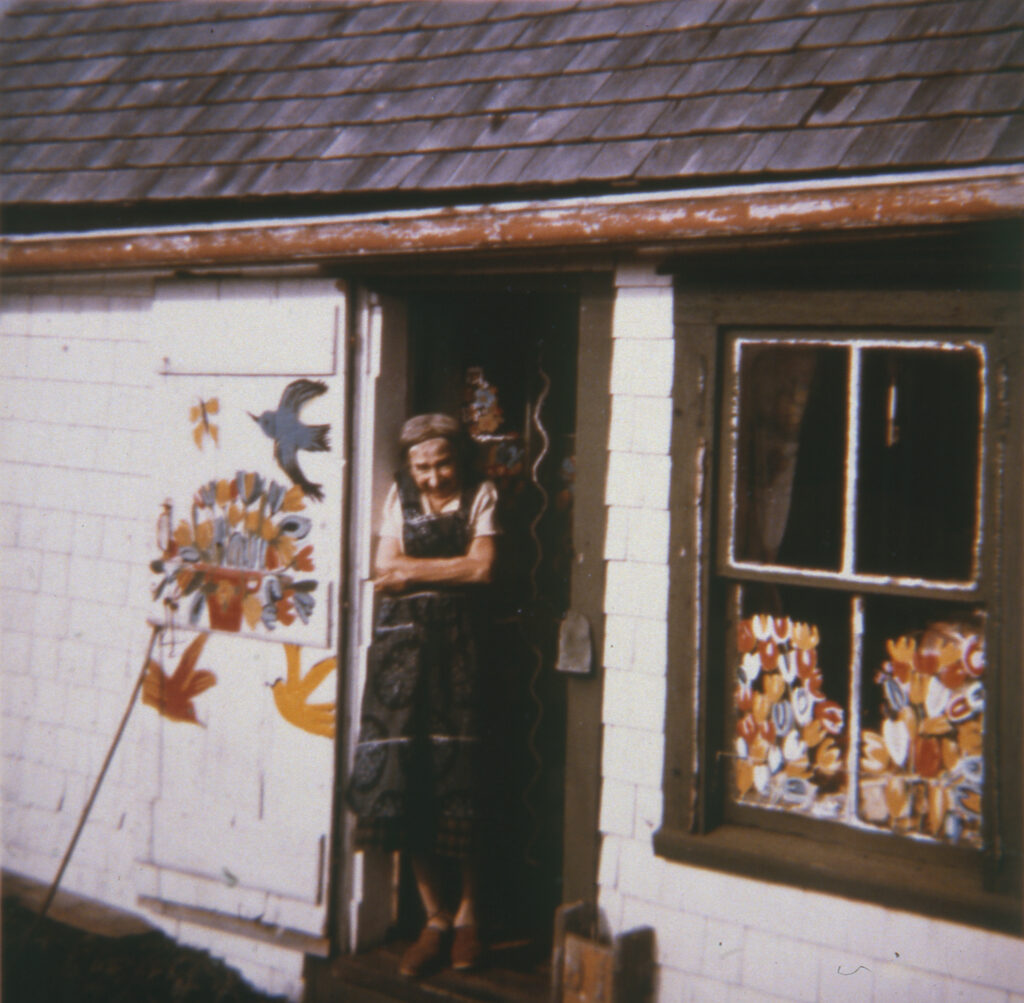
Reminder: Sign ups for the 5 Secrets to Designing a Feelgood Home are now open! Check the schedule for this year’s free live workshop here.


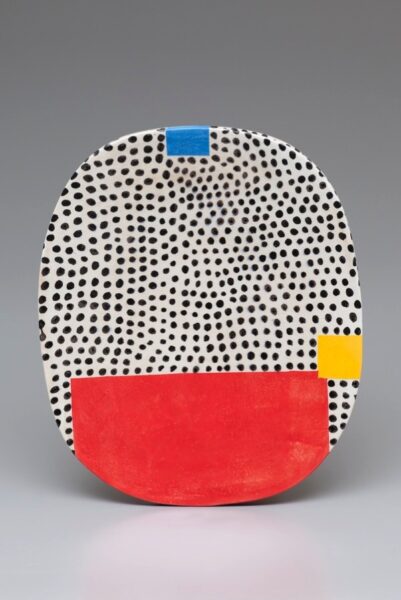


Discussion (8 Comments)
What a lovely post! I came across Maude and her artwork a few years ago and was mesmerized by her art and her story. They did make a movie about her life quite some time ago but you may want to try and find it, it was wonderful.
Dear Ingrid,
What a joy to receive your weekly post. They get better and better, and congratulations on the School of Joy, and the new Muse series. You are the best. I hope you know how much you contribute to our well being. I am forwarding this post to a friend who, anxious about everything, could use a shot of joy. YOU definitely are a muse. With love from my heart, dominique
Thank you for this reminder about Maud Lewis’ painting. I too enjoyed the movie that Diva mentioned above. It is called Maudie and came out in 2016, starring Sally Hawkins and Ethan Hawke.
Thank you Ingrid for your beautiful posts. I also love the film Maudie. Sally Hawkins plays her so beautifully – expressing both Maud’s joy and suffering.
My favourite artist is Christopher Corr. He paints every day, usually from a loft in London, not a shack in the middle of nowhere! But his paintings have a joyful, simple folk art style, full of saturated colour. He is easy to find on Instagram.
What a joy to find this post in my inbox because I live in Nova Scotia, about an hour from where Maud Lewis created her iconic works of art.
Her actual house is preserved (in full!) inside the Art Gallery of Nova Scotia and my husband and I visited the permanent display which includes a number of her original paintings, along with that famous tiny house – covered with colour and pattern and joy – inside the gallery several years ago.
There is also an incredible replica of her house near Digby, NS where visitors can browse both outside and in and see recreations of her art, newspaper clippings from her era etc. It was like taking a step back in time and my kids (~10 and 6 at the time we visited) loved the experience! (https://www.tripadvisor.ca/Attraction_Review-g154975-d7295643-Reviews-Maud_Lewis_Replica_House-Digby_Southwest_Nova_Scotia_Nova_Scotia.html)
I stumbled upon Maude’s work years ago while visiting the art museum in Nova Scotia during a visit. It was magical. It’s been great to see her work gaining in popularity over the years. I didn’t know you could visit the house! Great news because I’m planning another trip to your beautiful province.
This is beautiful!
Just finished watching the movie Maudie, so moved by her sight of the world and her pure heart.
Gratful to know some more here about her real life.